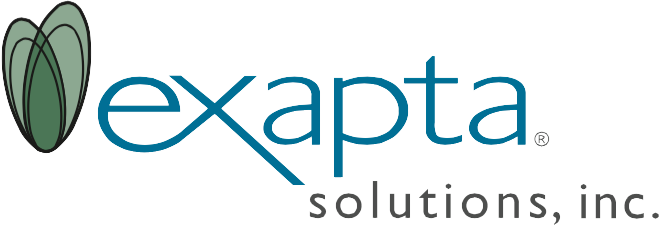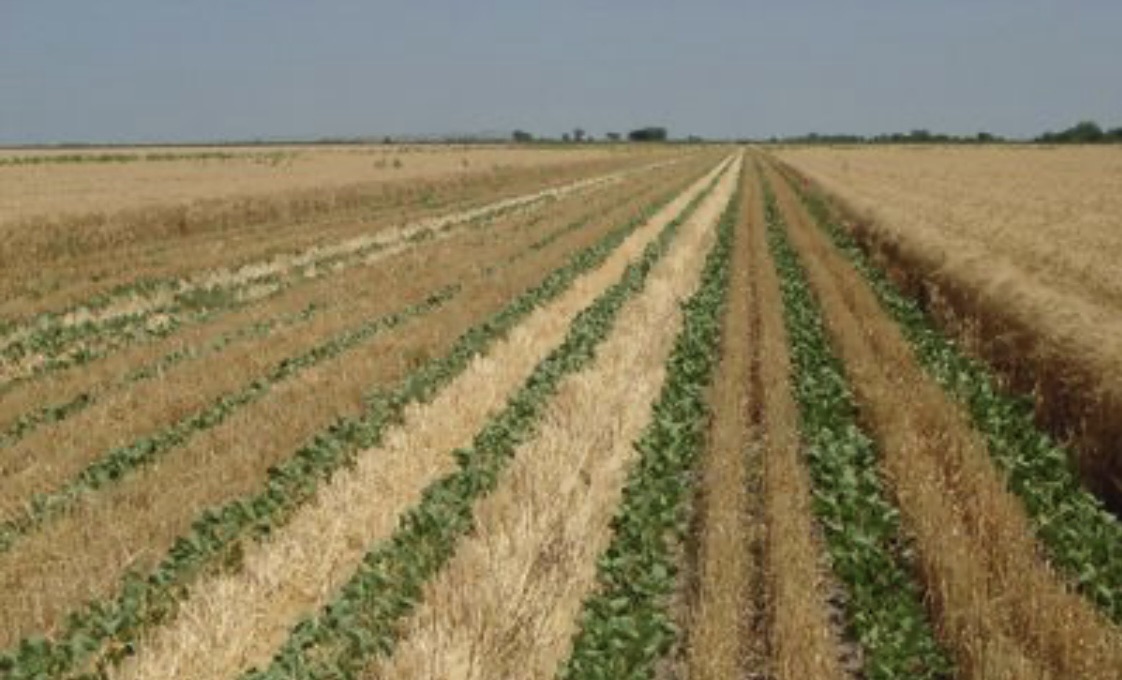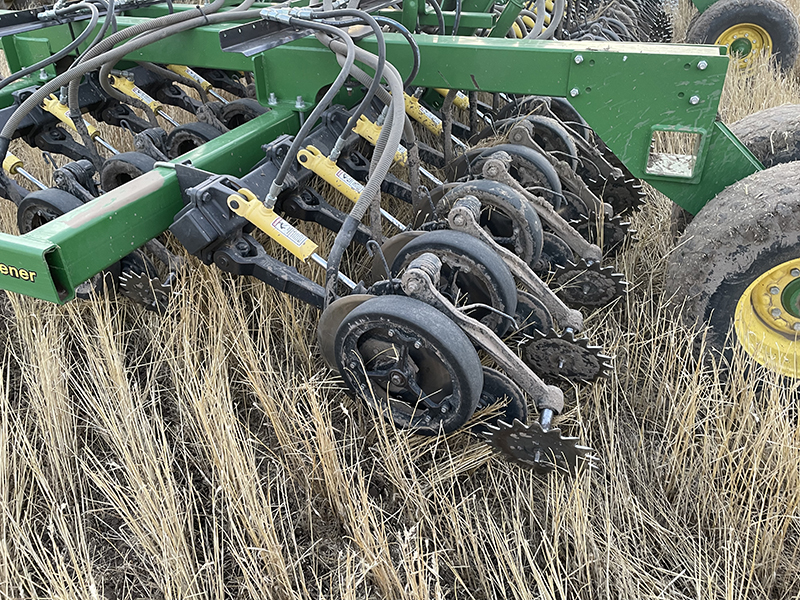by Ethan Begle, Technical Service
By June and July it’s usually hot and dry when double-crop planting tries to follow wheat harvest. “Trying” is a good description, as the hot and dry soils make for a tough time penetrating to get the seed into moisture. By the end of July it’s easy to see where the new plants struggled to emerge and grow due to the seed not getting planted deep enough. Inconsistent depth is the reason why hydraulic downforce and proper weight ballast on planters and air seeders are so important. We still see seeders without enough weight (7.5” rows especially) for the downforce springs to leverage against. Because JD single-disc openers use a swing arm design for the row unit, the actual working range in which the springs hold the correct down pressure is very short. We replaced the springs on each row with UniForce hydraulic cylinders to increase the range in which the openers will hold the correct down pressure. Instead of having to increase the down pressure on the whole drill when you only need some of them to be higher pressure, the UniForce system equalizes pressure between units. If a few rows are not keeping the gauge wheel on the soil because of hard ground, oil will get sent to those openers to equalize the pressure again. Fields that have terraces or terrain where the openers use their full range of travel will benefit from an upgrade to hydraulic down force.
On the topic of double-cropping, the growing season gets much shorter north of I-70. Getting crops to finish before a frost while maximizing yield can be challenging. If you haven’t seen the relay cropping many of growers are working to perfect, there is a lot of info out there about what has been tried. Relaying soybeans by planting between wide-row wheat in April allows for longer season maturities that can continue flowering earlier and take full advantage of the growing season. Planting early when there’s moisture, rather than in the drier summer months, helps combat the penetration problems mentioned earlier. Since soybeans are the higher value crop, the relay gives more advantage to optimizing the bean yields while still achieving average or better wheat yields.
In Kansas and drier areas, I can understand the economics of dryland wheat being more of a cover crop than a cash crop. It’s nice to have a cover crop that pays its way and gives great residue cover for next year’s cash crop. Again, getting a good stand is the key to capturing potential yield and there are ways to improve the seeder to accomplish this. There are also different management strategies to improve the double-crop scenario with relay cropping, and this newsletter is intended to highlight some ways to make double crops profitable.


